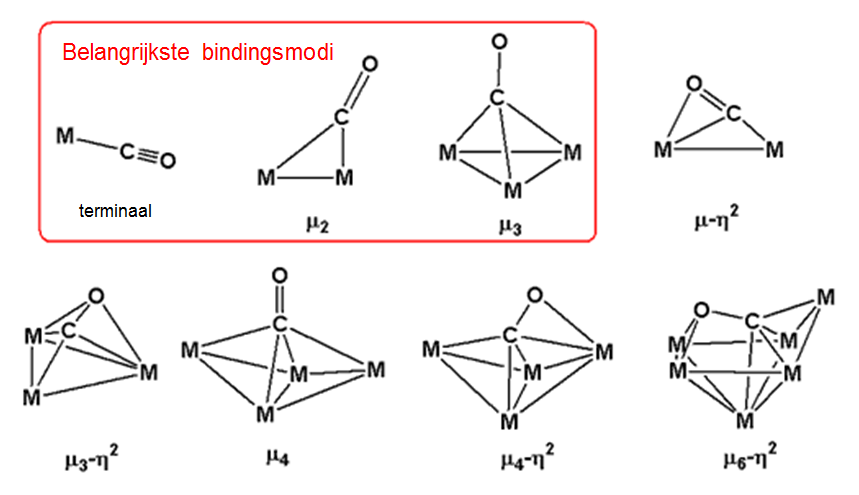What is the Difference Between Terminal and Bridging Carbonyls
Table of Contents
The key difference between terminal and bridging carbonyls is that the terminal carbonyl group has its carbon atom bonded to one metal atom, whereas a bridging carbonyl group has two metal atoms bonded to the carbon atom.
A carbonyl group is a functional group made of a carbon atom and an oxygen atom; the carbon atom contains a lone electron pair. A terminal carbonyl group is a simple structure that uses its lone electron pair at the carbon atom to bind with a single metal atom. A bridging carbonyl group, on the other hand, is a complex structure that bridges a pair of metals.
CONTENTS
1. Overview and Key Difference
2. What are Terminal Carbonyls
3. What are Bridging Carbonyls
4. Terminal vs Bridging Carbonyls in Tabular Form
5. Summary – Terminal vs Bridging Carbonyls
What are Terminal Carbonyls?
The terminal carbonyl group is a simple structure and uses its lone electron pair at the carbon atom to bind with a single metal atom. Since it occurs at a terminal of a carbon chain, we call it the terminal carbonyl group. This group is also known as a terminal ligand. Therefore, we can describe it as a non-metal atom or functional group that is bonded by chemical bonding to only one of the atoms in the metal core of the cluster.

Figure 01: Terminal and Bridging Carbonyls
We can use infrared spectroscopy to identify terminal and bridging carbonyl compounds. The terminal carbonyl group-containing compounds show a stretching band of 2000 – 2100 cm-1. Some common examples of terminal carbonyl compounds include carbamates, derivatives of phosgene, lactams, etc.
What are Bridging Carbonyls?
The bridging carbonyl group is a complex structure and bridges a pair of metals. In other words, it acts as a bridge to combine two metal centers. We can use infrared spectroscopy to identify terminal and bridging carbonyl compounds. The bridging carbonyl group-containing compounds show a stretching band of 1720 – 1850 cm-1. An example of a bridging carbonyl is Fe2(CO)9.
What is the Difference Between Terminal and Bridging Carbonyls?
A carbonyl group is a functional group made of a carbon atom and an oxygen atom, and the carbon atom contains a lone electron pair. We can categorize carbonyl groups into two; the terminal and bridging carbonyls. The key difference between terminal and bridging carbonyls is that the terminal carbonyl group has its carbon atom bonded to one metal atom, whereas a bridging carbonyl group has two metal atoms bonded to the carbon atom.
Some common examples of terminal carbonyl compounds include carbamates, derivatives of phosgene, lactams, etc., while Fe2(CO)9 is an example of a bridging carbonyl. Moreover, when using infrared spectroscopy, terminal carbonyl groups have a stretching band of 2000 – 2100 cm-1, and bridging carbonyl groups have a stretching band of 1720 – 1850 cm-1.
The below infographic presents the differences between terminal and bridging carbonyls in tabular form for side-by-side comparison.
Summary – Terminal vs Bridging Carbonyls
A terminal carbonyl group is a simple structure that uses its lone electron pair at the carbon atom to bind with a single metal atom. A bridging carbonyl group, on the other hand, is a complex structure that bridges a pair of metals. The key difference between terminal and bridging carbonyls is that the terminal carbonyl group has its carbon atom bonded to one metal atom, whereas a bridging carbonyl group has two metal atoms bonded to the carbon atom. Some common examples of terminal carbonyl compounds include carbamates, derivatives of phosgene, lactams, etc., while Fe2(CO)9 is an example of a bridging carbonyl.
Reference:
1. 24.2b: Carbonyl ligands. Chemistry LibreTexts. Retrieved May 22, 2022.
Image Courtesy:
1. “CObondingmodes2-NL” By Mcannos – File:CObondingmodes2.GIF (CC BY-SA 3.0) via Commons Wikimedia
ncG1vNJzZmivp6x7pbXFn5yrnZ6YsqOx07CcnqZemLyue9ahmK1lmah6tbTEZpuinpaav6a6wp5km52krLKmuoytnKulmaOurXnAp5tmmqKesai1zaBknJmil7yvxcusZg%3D%3D